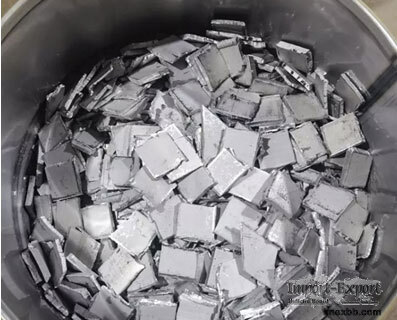 |
 |
Home > Offers to Sell > Electronics & Electrical > Passive Components > Electrolytic Capacitors
| Contact: | hsgmetal |
|---|---|
| Company: | Beijing Huasheng Metal Materials Co., Ltd |
| Building 13, Courtyard No. 88, Shiliu Center, Liuxiang Road, Fengtai District, Beijing, 100079, Chin | |
| Beijing Beijing | |
| China | |
| Phone: | 86 010-87659165 |
| Fax: | 86 010-56762259 |
| E-Mail: | |
| Date/Time: | 6/7/23 7:41 GMT |
Cobalt Metal
Cobalt Metal for Sale
Cobalt is a shiny steel-gray metal, relatively hard and brittle, ferromagnetic,
heated to 1150℃ magnetic disappear. The combined valence of cobalt is 2 and 3.
It does not interact with water at room temperature and is stable in humid air.
It is oxidized to CoO when heated to more than 300℃ in the air, and burned
into Co3O4 when white hot. The fine cobalt metal minor powder produced by
hydrogen reduction can spontaneously ignite into cobalt oxide in air.
Specification of Cobalt Metal
Chemical Composition
Co:99.95 C: 0.005 S<0.001 Mn:0.00038 Fe:0.0049
Ni:0.002 Cu:0.005 As:<0.0003 Pb:0.001 Zn:0.00083
Si<0.001 Cd:0.0003 Mg:0.00081 P<0.001 Al<0.001
Sn<0.0003 Sb<0.0003 Bi<0.0003
Application of Cobalt Metal
Cobalt metal is mainly used to make alloys. Cobalt-based alloy is the general
term for an alloy made of cobalt and chromium, tungsten, iron, and nickel. The
wear resistance and machinability of the tool steel with a certain amount of
cobalt can be significantly improved. Starlite carbide with cobalt-50 or more
will not lose its original hardness even if heated to 1000℃. Today, this kind
of carbide has become the most important material used between gold-cutting
tools and aluminum.
Production Process of Cobalt Metal
The methods of extracting cobalt from cobalt-containing materials can be
divided into full fire process, full wet process and combined fire and wet
process. Modern cobalt extraction mostly uses a combined process.
(1) Full fire process. It was widely used before the 1940s, and now only the
Panda cobalt plant in Zaire uses electric furnace to melt copper and cobalt
alloys.
(2) Full wet process. It mainly includes the pressurized acid leaching, ammonia
leaching, sulfuric acid leaching, nitric acid leaching and chlorination
leaching of various materials containing cobalt.
(3) Joint process. It can be roughly divided into two cases: one is to use
sulfation roasting (copper and cobalt concentrate, pyrite), reduction roasting
(laterite ore), arsenic removal roasting (arsenic and cobalt concentrate) and
other simple fire treatment, and then leaching with acid or ammonia solution;
The other is in the process of copper, nickel, zinc and other metals smelting
process, cobalt enrichment as an intermediate, and then wet treatment.
Due to the complexity of cobalt extraction materials, there is no "standard" or
traditional process for cobalt metallurgy. However, no matter what process is
used, the final production of cobalt metal generally adopts wet process, which
is a major feature of cobalt metallurgy. The production of metallic cobalt from
intermediate products containing cobalt obtained by various processes is
usually done by drilling electrolysis or hydrogen reduction.
Features of Cobalt Metal
01.
There are 13 isotopes of cobalt, but only 59Co is found in nature. The
artificially produced isotope 60Co has a wide range of uses.
02.
The stable crystal shape of cobalt at room temperature is hexagonal dense
packing, while the stable structure above 673K is face-centered cubic.
03.
Cobalt is a ferromagnetic substance, similar to iron and nickel in hardness,
tensile strength, mechanical properties, thermodynamic properties and
electrochemical behavior.
If you want to know more kinds of refractory metals, please visit our website.
SOURCE: Import-Export Bulletin Board (https://www.imexbb.com/)
Similar Products:Not exactly what you are looking for? Post an Offer to Buy!
![]()
© 1996-2010 IMEXBB.com. All rights reserved.
|
|
|






